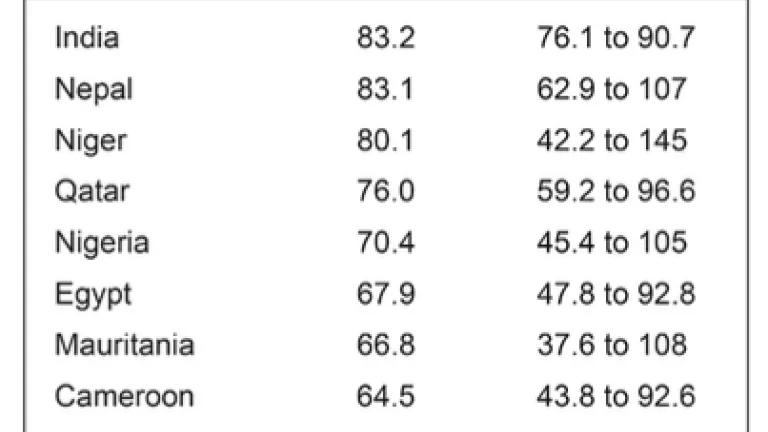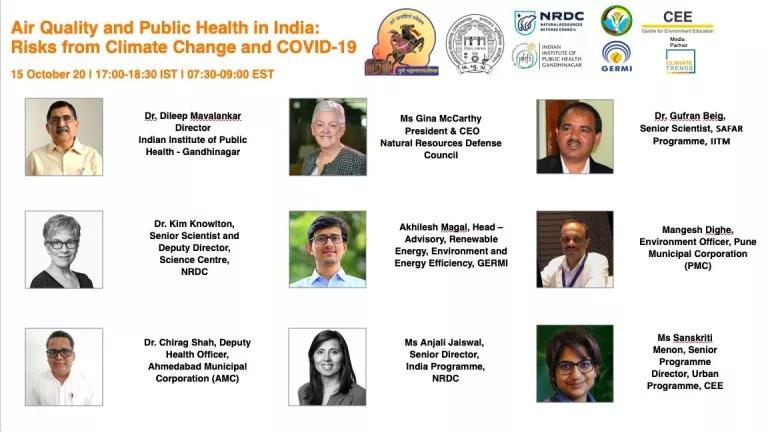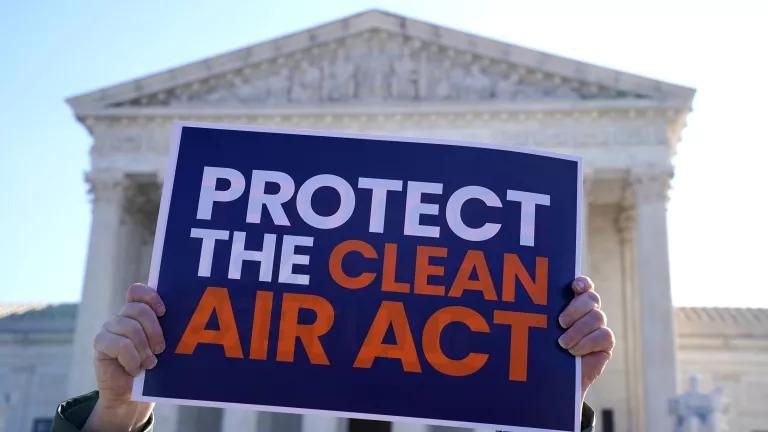State of Global Air Report: Unhealthy Air for All in India
Read more about the latest State of Global Air Report and air pollution in India.

Top 10 countries with the highest population-weighted annual average PM2.5 exposures in 2019
Co-authored with Polash Mukerjee and Jessica Korsh
The Delhi-National Capital Region (NCR) recorded the worst air quality in four years this Diwali. The overall Air Quality Index (AQI) just reached a season high in Delhi, after five consecutive days with recorded AQIs in or above "severe" (401 or greater). Within Delhi, several localities have recorded AQIs near the 500 mark for deadly fine particles – over eight times the safe Indian limit. Just a few months ago during the nationwide coronavirus lockdown, air pollution in northern India dropped to a 20-year low. Yet, 100% of the population in India is above the WHO guideline. Outdoor (ambient) PM2.5 is the largest driver of air pollution’s burden of disease worldwide, according to the newly released 2020 State of Global Air Report.
Air pollution is now the world’s fourth leading risk factor for early death – and worsening especially in India. In light of COVID-19, clean air and blue skies are more urgent than ever for polluted cities in India, as discussed in 2020 State of Global Air Report.
Globally, 4.5 million deaths were linked to outdoor air pollution exposures in 2019, as found in the State of Global Air Report. Considered separately, outdoor (ambient) particle pollution (PM2.5) ranked as the 6th leading risk factor and household air pollution ranked 9th. In 2019, about 980,000 premature deaths were linked to indoor and outdoor air pollution in India - up from 2018 and 2017. Additionally, emerging research shows that exposure to higher air pollution can increase the COVID-19 death rate.
Despite improvements in reducing global average mortality rates from air pollution, the world’s most populous countries, India and China, continue to bear the highest burdens of disease. While the average global air pollution exposures declined slightly over the last decade, disparities exist and there has been little sustained progress in the world’s most polluted regions.
Over 90% of the world’s population lives in areas where PM2.5 levels are above the WHO guideline for healthy air, with 100% of cities in India and particular matter as the leading pollutant. PM2.5 particles are less than a 30th of the diameter of a human hair, and are emitted from vehicles, coal-burning power plants, industrial activities, waste burning, and other sources.
Source: 2020 Global State of the Air
Long-term exposure to air pollution contributes to increased risk of illness and death from ischemic heart disease, lung cancer, chronic obstructive pulmonary disease (COPD), lower-respiratory infections like pneumonia, stroke, type 2 diabetes, and adverse birth outcomes. Throughout the world, children and the elderly are most severely affected by the burden of disease attributable to air pollution.
While New Delhi’s air pollution crisis receives more media attention, over the majority of Indian cities struggle with unhealthy air quality. A recent report shows that almost all of India is exposed to pollution levels 5.5 times greater than WHO recommendations. And given the country’s population density, non-urban Indians are similarly exposed to air pollution, but with reduced access to healthcare.
In 2019, the Government of India launched its National Clean Air Program (NCAP). NCAP aims to reduce pollution levels (PM2.5 and PM10) by 20-30% by 2024 in cities where current air pollution levels exceed the national health-based standards. The NCAP is working to expand the national air quality monitoring network, build capacity for air pollution management, and strengthen public awareness about the dangers of air pollution. The city-level plans aim to work in close consultation with the broader national interventions. City actions on air pollution include expanding electric mobility, solid waste controls, enhanced air pollution monitoring, and regulating industries.
Understanding the complex effects of climate change on air pollution and public health is an urgent worldwide task. Delhi and the NCR are known for its skyrocketing air pollution in the late-fall and winter, when the temperature inversion layer traps in pollutants and low wind speeds prevent the dispersion of pollutants. In a warming world, more global regions will experience increasingly stagnant atmospheric conditions. Large swaths of India could see many more stagnant air days per year. Additionally higher temperatures spike demand for air conditioning, which if fossil fuels are providing the power for cooling can worsen air pollution and health problems.
Given that air quality problems in India are often driven by pollution from the same fossil fuels that accelerate climate change, actions to reduce harmful emissions can achieve major wins for public health in the near-term and long-term, for the environment, and for India’s economy. The urgency to protect local communities from air pollution is even greater with the ongoing pandemic.
Polash Mukerjee is an air quality expert working with NRDC as a consultant based in New Delhi. Jessica Korsh is an environmental health specialist working with NRDC's India program.



